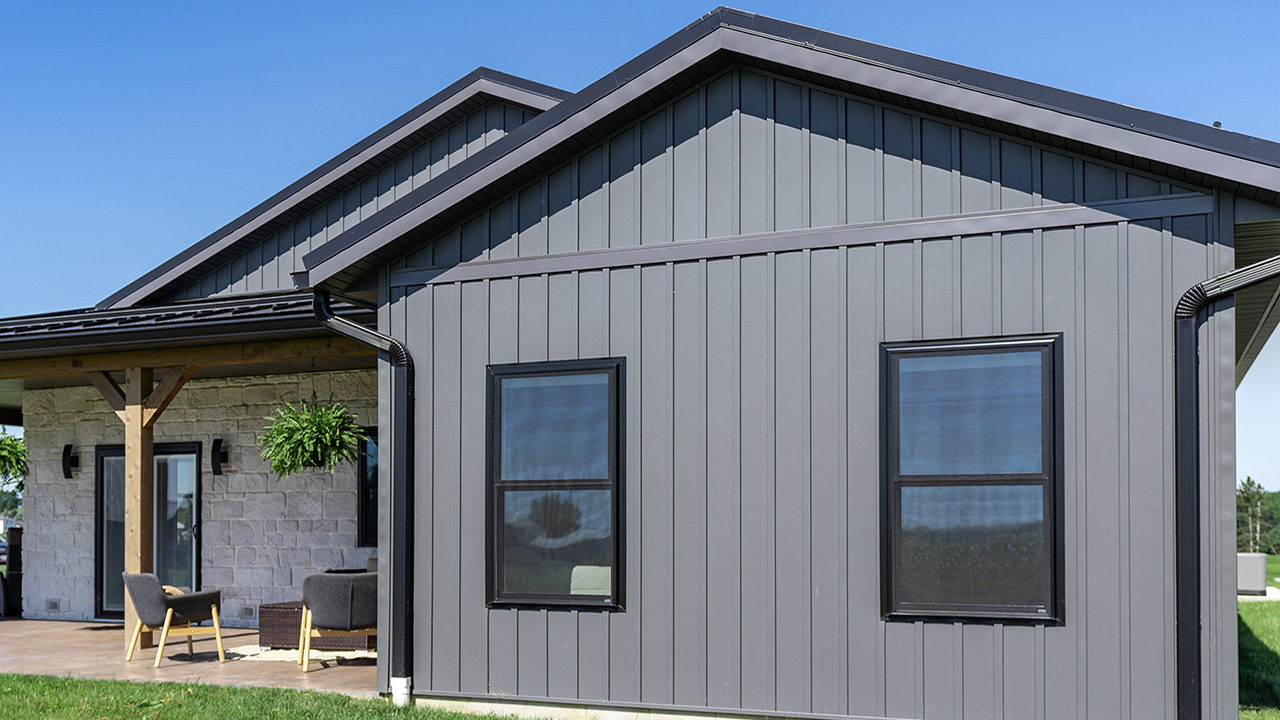Durable insulated siding options offer a compelling blend of aesthetics, energy efficiency, and longevity. This comprehensive guide explores various materials, installation methods, cost considerations, and environmental impacts to help you make an informed decision for your home improvement project. We’ll delve into the pros and cons of different siding types, providing you with the knowledge to choose the best option for your specific needs and budget. Understanding the nuances of insulated siding will empower you to enhance your home’s curb appeal while simultaneously reducing energy consumption and increasing its overall value.
From the initial selection of materials—vinyl, fiber cement, engineered wood, or metal—to the intricacies of installation and long-term maintenance, this guide provides a detailed roadmap. We’ll examine the thermal performance characteristics of each option, highlighting the impact on energy bills and environmental footprint. Furthermore, we will explore the aesthetic possibilities, ensuring your siding choice complements your architectural style and personal preferences.
Types of Durable Insulated Siding
Choosing the right insulated siding can significantly impact your home’s energy efficiency, curb appeal, and longevity. This section details the common types of durable insulated siding, their manufacturing processes, and their respective thermal performance characteristics, enabling informed decision-making for homeowners and contractors.
Insulated Siding Material Properties
The following table summarizes the key properties of common durable insulated siding materials. It’s important to remember that specific product performance can vary based on manufacturer and installation.
| Material | Pros | Cons | Typical Lifespan (Years) |
|---|---|---|---|
| Vinyl | Affordable, low maintenance, variety of colors and styles, relatively easy installation | Can be damaged by impact, susceptible to fading in intense sunlight, less durable than other options | 20-40 |
| Fiber Cement | Highly durable, fire-resistant, resists insects and rot, low maintenance | More expensive than vinyl, heavier than vinyl requiring more robust installation, can be brittle | 50-80 |
| Engineered Wood | Aesthetically pleasing, can mimic the look of natural wood, relatively durable | Requires more maintenance than vinyl or fiber cement, susceptible to moisture damage if not properly installed and maintained, can be more expensive than vinyl | 30-50 |
| Metal (Aluminum or Steel) | Extremely durable, fire-resistant, long lifespan, low maintenance | Can dent, susceptible to scratches, can be noisy in high winds, potentially more expensive upfront | 50-75+ |
Insulation Integration Methods
Insulation integration varies depending on the siding material. Vinyl siding often incorporates a foam backing directly bonded to the vinyl during manufacturing. Fiber cement siding may have a separate foam insulation board installed behind it, creating a more robust insulated wall assembly. Engineered wood siding might utilize a similar approach with foam boards or incorporate insulation within the composite material itself. Metal siding frequently utilizes a combination of insulation board and potentially a separate weather barrier.
Thermal Performance Comparison
The thermal performance of insulated siding is primarily measured by its R-value, which represents its resistance to heat flow. Higher R-values indicate better insulation. While exact R-values vary by product and thickness, generally, fiber cement with added insulation boards provides superior thermal performance, followed by engineered wood and vinyl with integrated foam. Metal siding, while inherently durable, often requires additional insulation for optimal thermal efficiency. The choice of insulation type behind the siding (e.g., fiberglass, foam board) also significantly affects the overall R-value of the wall system. For example, a vinyl siding system with a 1-inch foam backing might have an R-value of around 4, while a fiber cement system with a 2-inch foam board could achieve an R-value of 10 or higher. This difference translates to significant energy savings over the lifespan of the home.
Conclusive Thoughts
Ultimately, selecting durable insulated siding is an investment in both the aesthetic appeal and the long-term value of your home. By carefully weighing the factors discussed—material properties, installation complexities, cost implications, and environmental considerations—you can make a well-informed decision that meets your individual needs and budget. Remember to consider the warranty, maintenance requirements, and the overall lifespan of each option to ensure a worthwhile investment that will enhance your home for years to come. Choosing the right insulated siding can transform your home’s exterior, creating a space that is both beautiful and energy-efficient.

